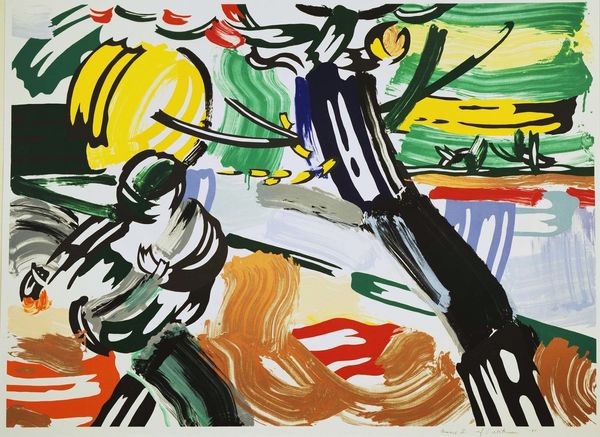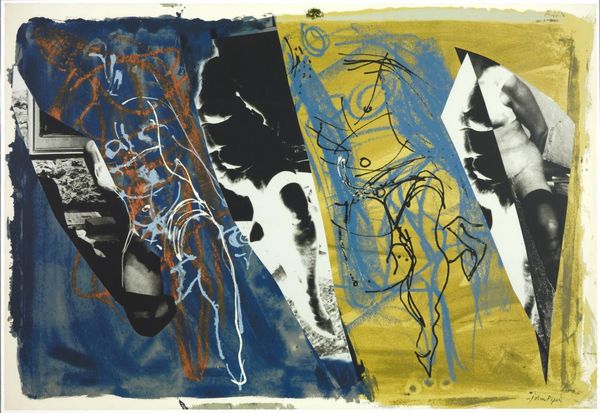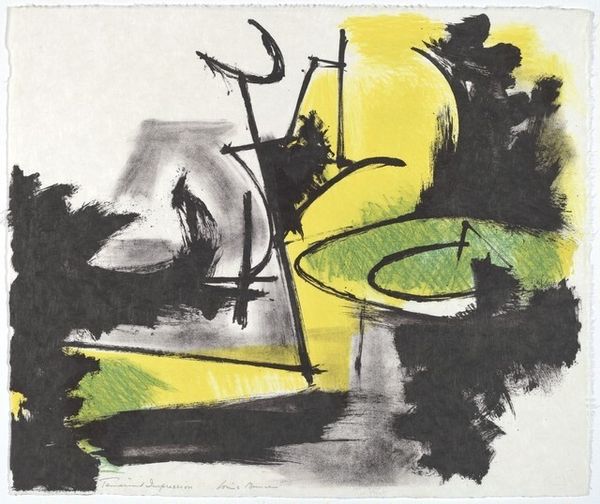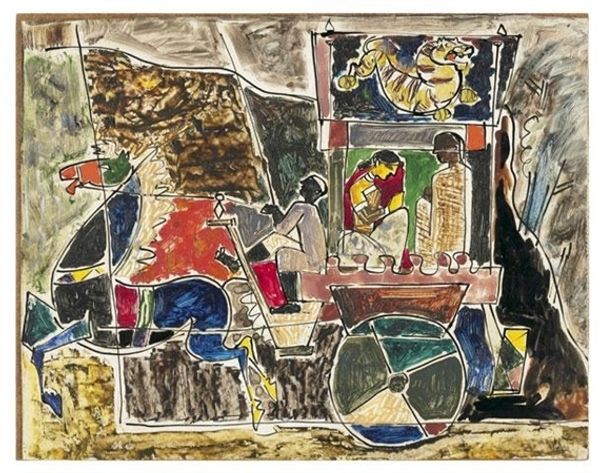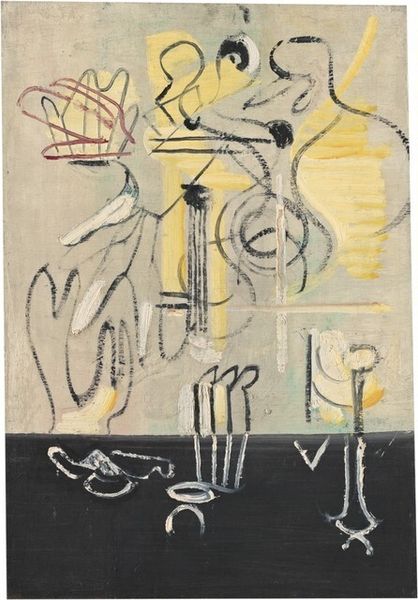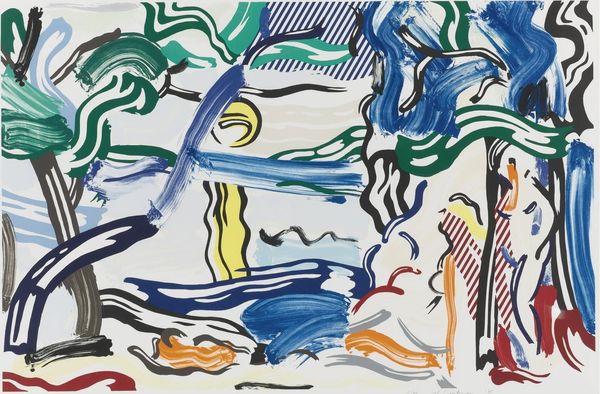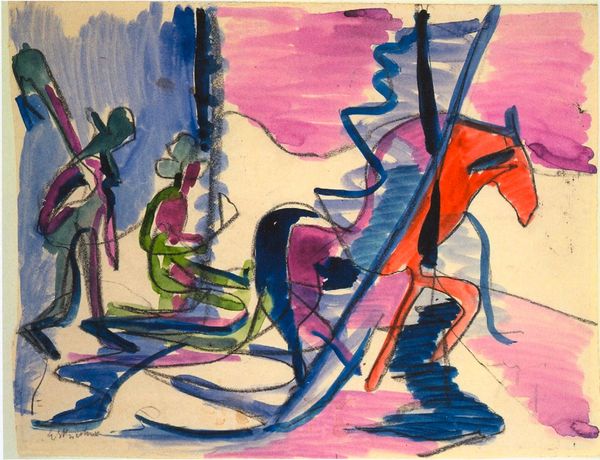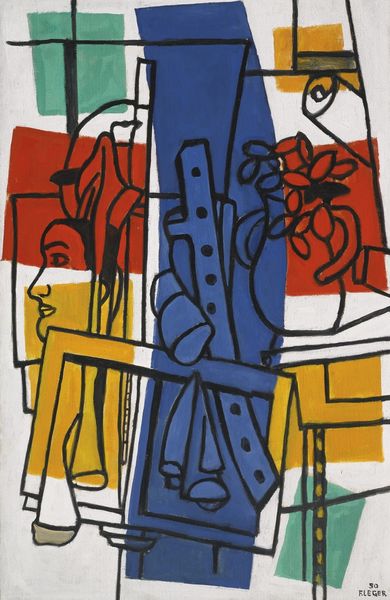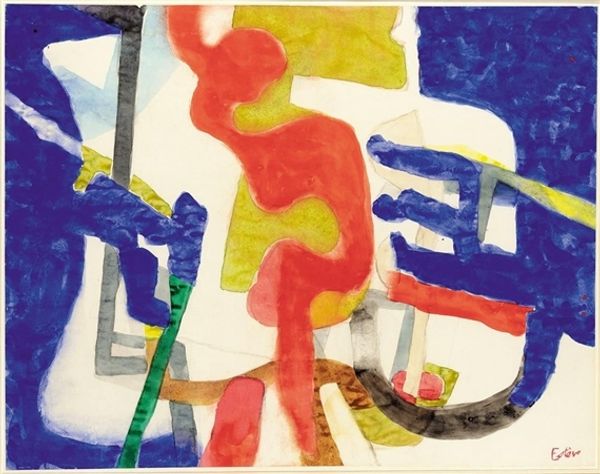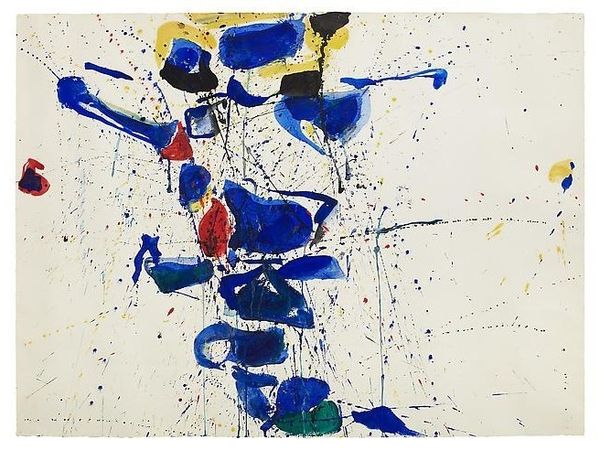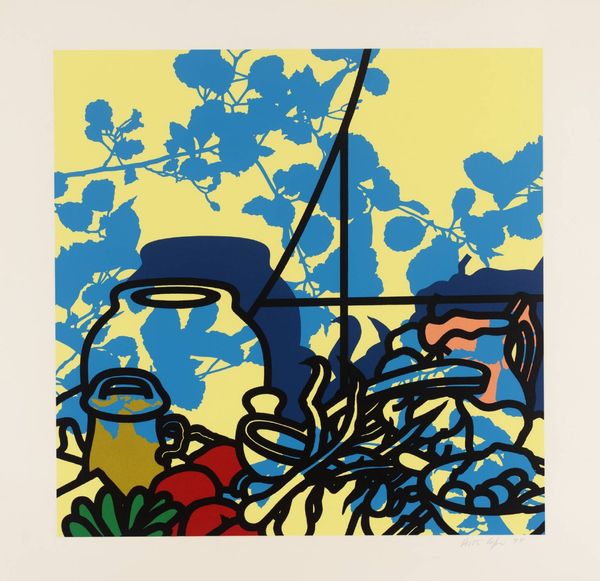
painting, watercolor
#
cubism
#
painting
#
pop art
#
watercolor
#
geometric
#
naive art
#
abstraction
#
modernism
Dimensions: 28.8 x 26.5 cm
Copyright: Public domain US
Artist: Oh, look at this! I'm immediately drawn to how the blue just breathes life into the whole thing. It’s like a hazy dream… What is this curious piece? Art Historian: That’s "Composition at Pitcher" by Fernand Léger, painted in 1918. It’s watercolor on paper. A real gem of early modernism. Artist: It's utterly joyful! The colors, the shapes—so playful, like a children’s book illustration gone gloriously abstract. The pitcher seems almost… alive. Does that sound silly? Art Historian: Not at all. Léger was moving toward a "mechanical" aesthetic after his experiences in World War I, yet these softer abstractions demonstrate the negotiation between the figure and machine he undertook at this time. The pitcher is indeed, quite prominent, asserting domesticity amongst broader political unrest. Artist: Machine aesthetic, yes! There's a solid feel but… the lines are soft and round like a beloved storybook or folk tale. Was this also maybe reflecting new freedoms for domestic and family life perhaps? Art Historian: Intriguing point. The aftermath of war undeniably transformed societal roles and domestic expectations. Although Léger did embrace mechanization he was, in fact, humanizing machines and celebrating common objects and shared public life through his art. This painting blends those notions perfectly, a post-war moment where familiar subjects begin a transformation from solid objects to abstracted entities. Artist: A total reshaping. It’s like he’s hinting that even our simplest belongings have depth and new stories to tell after something catastrophic has occurred.. like us, when you see a painting that once spoke in one language, then began shouting a whole other. A total visual and artistic revolution! It shows the potential in seeing even utilitarianism with creative optimism.. Art Historian: Precisely. It's a fascinating moment, captured here in these loose yet suggestive strokes. Thank you for the insights. Artist: Anytime, it was wonderful speaking with you!
Comments
No comments
Be the first to comment and join the conversation on the ultimate creative platform.
